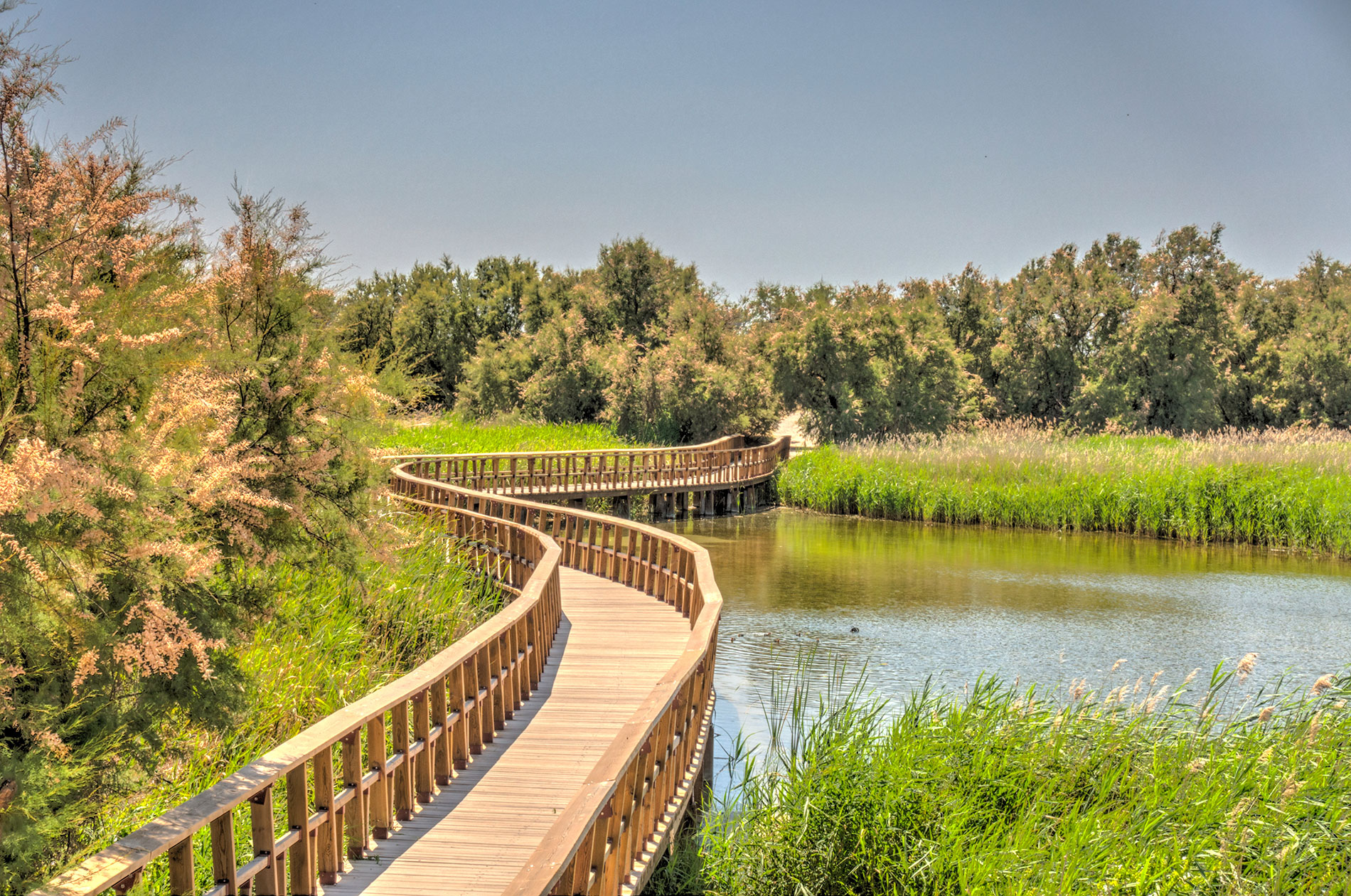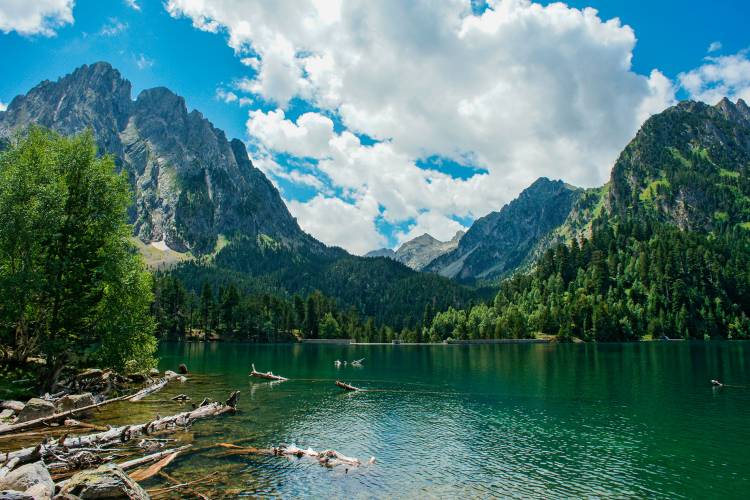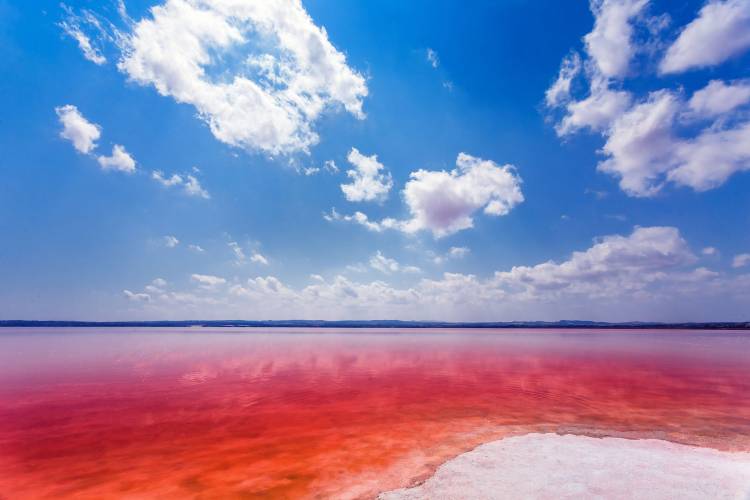Lagoons: natural beauty in our environment
Natural Park of La Mata Lagoons and Torrevieja, Ruidera Lagoons, the Tablas de Daimiel, Sant Maurici Lake, Gallocanta Lagoon… Discover some of the most beautiful lagoons of our country with us.
TRAVELLING WITH TASTE
Share

Banyoles Lake (Girona)
This is the largest lake in Catalonia. Situated within the interior of the Province of Girona and over 250.000 years old, this natural location is of tectonic and karst origins. You can stroll around the lake, take the cycle trails, take a boat trip or practice water sports such as kayaking or water skiing. In 1992 the lake was set up to host the rowing competitions for the Barcelona Olympic Games and, in 2004, it hosted the World Rowing Championship.
It also has 3 demarcated swimming areas:
- The wooden cabin. This is a natural area located in the north-west part of the lake.
- Banyoles Swimming Club. Has access to the lake to enjoy a refreshing dip.
- Banys Vells. Is a bar with a terrace adjacent to another area where swimming in the lake is permitted.
Sant Maurici Lake (Lleida)
Located in the National Park of Aigüestortes in the heart of the Catalan Pyrenees, this lake lies at the foot of the peaks known as Els Encantats. The main feature of this park is water: rivers, waterfalls, ponds, glacial valleys and almost 200 mountain lakes. It is also the only national park in Catalonia that covers 105 square kilometres of high mountain and it is the centre of a protected natural area which is three times larger in size. It is a paradise for hiking, mountain biking, trail and other mountain activities such as skiing during the winter.

Gallocanta Lagoon (Zaragoza)
Located in the middle of the Iberian System, it occupies the bottom of a closed watershed of around 500 km2 on a plain at an altitude of 1.000 metres above sea level. It is the largest saline lagoon in Europe. Cranes stop here in the autumn and in the spring as they escape from the cold of northern Europe. In October, flocks of migrating birds make their first stop here before continuing their journey to the south of Spain. And in the spring, they retrace their journey on their way back to northern Europe.
The lagoon has several observatories from which one can enjoy even better views of these spectacular sights.
Tablas de Daimiel (Ciudad Real)
This is a wetland that was declared a national park in 1973. Its name originates from the natural water table phenomenon, an ecosystem which is created at the confluence of two rivers and which spills onto an area of floodplain. In this particular case, the two rivers that give rise to the Tablas are the Guadiana and the Cigüela.
An important step was taken towards the conservation of one of the most valuable ecosystems of La Mancha when it was declared a national park. This assured the survival of the waterfowl that use the area for wintering, moulting and nesting, and it created an integral area for waterfowl such as the northern shoveller, Eurasian teal and the grey heron. Of additional note are the endemic fish species, such as the ide, the calandino and the colmilleja. Among the reptiles here are the European tortoise and the Spanish pond tortoise, water snakes and, on land, the Montpellier snake.
Ruidera Lagoons (Albacete - Ciudad Real)
A total of 15 lagoons form this natural setting that extends over 30 km along the length of the valley of the Alto Guadiana River, which emerges at the valley’s highest point. A group of lagoons replete with waterfalls, natural beaches and clear waters have been created by the action of theGuadiana River. The 3.772 hectares that make up this natural park contain a large number of animal species such as, Bonelli’s eagle, purple herons and waterfowl such as coots, dippers, mallards, etc. Apart from enjoying the views, you can practice activities such as hiking, diving, kayaking, sailing and a climbing wall, among others.
The pink lagoons of La Mata and Torrevieja (Alicante)
The unique feature of these lagoons, which are located at the southern end of the Province of Alicante, are their pink colour. Both lagoons are used for the extraction of salt. This natural phenomenon, which is unique to Spain, is produced by a bacterium which releases a pink pigment into water with a high salt concentration, the salt levels are very similar to those in the Dead Sea. Declared a natural park in 1992, it contains over 150 species of flora, such as daffodil, salt marsh plants, globularia and bee orchids. It also has one of the largest flamingo populations in Spain.







